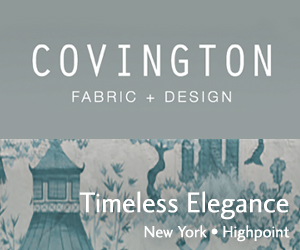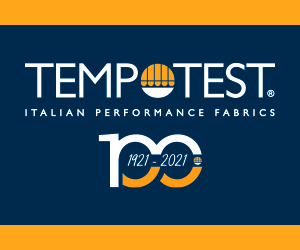Indian Textile Manufacturers Prepare for Heimtextil: Create Materials for a New Circular Economy
November 30, 2022

Dr. Vibhavari, Ms. Biniya Arul Jothi, and Aksharaa Kethavath
By Ray Parker
BENGALURU, INDIA – Textile trend experts say manufacturers here need to gear up for the new global “circular economy,” specifically by using more reusable materials, such as polyester, and by creating more muted color palettes.
“Though I know there's a lot of noise about how you have to become sustainable, how you have to get into a circular economy,” Biniya Arul Jothi, assistant professor, master of design space department, at the National Institute of Fashion Technology (NIFT), says.
“This has not actually entered the home furnishing market yet. Right? People speak more in terms of apparel, but very less in terms of home furnishing, but the forecast says that people are going to move towards a lot of making and remaking.”
During the webinar on Nov. 24, more than 500 textile manufacturers heard about how to prepare now for upcoming trade fairs, such as Heimtextil (Jan. 10-13).
Heimtextil officials are also emphasizing the circular economy.
“By adding materials to a utilization cycle again and again, the need for new raw materials are reduced on the one hand and the production of waste on the other,” the Heimtextil website states. “In the technical cycle, inorganic materials, such as nylon, polyester, plastic, and metal, can be recycled with no loss in quality.”
The webinar speakers piggybacked on the four main Heimtextil 2023 themes: Make and Remake; Continuous; From Earth; and Nature Engineered.
Assistant Professor Arul Jothi says in many ways the “continuous” theme harkens back to how previous generations reused textiles.
“The Saris will become bedsheets, the curtains will become pillow covers,” she says. “But today, you're not actually doing that. You know, it's very easy for us to quickly dispose and buy something new. But again, the continuous speaks of a story that you know, you will have to bring it back to the (manufacturing) system.
“You take resources from nature, and you make use of it (but) again you will have to try and bring it back right…. So that means the materials must be made of single compositions, 100% polyester because blends will be difficult to recycle and upcycle.”
She continues that buyers could also become more aware of the importance of reusing materials.
“You must communicate the same to the buyer also, maybe (with) a small story or a small label telling this is what this material is about. (Tell them) once you're done using the materials, (they) can always return it back to the showroom, or return it back to us, and we will try and bring it back into the system.”
Classic colors, those that will never go out of trend, are also important in-home textiles, she says. “These are blues, grays, beiges, and others that will make a home look stylish for a decade.”
Arul Jothi explains the final theme: From Earth. The strict buyer-color palettes, which traditionally cannot involve bleeding, will have to be modified with this new concept, she says.
From Earth means “it is okay if the colors don't match,” she says. “It is okay if there are irregularities. We are okay in accepting what the natural world is giving us.
“We are moving more towards organic colors, irregular finishes, handmade finishes. … So here we basically celebrate the natural variations that occur. So, this mainly speaks of using organic fabrics and organic dyes.”
Certain brands highlight these trends, she says, including ‘Anthropologie’ and ‘Fabindia.’
“To summarize, I just wanted to introduce trends that are taking huge importance in terms of home furnishings and production,” Arul Jothi says. “It is all about circularity, and it's all about sustainability, and being environmentally friendly.”
The other presenter, Vibhavari Kumar, professor of design communication at NIFT Bengaluru, says it’s important to have a “selfie point,” either in a store or stall.
“Another interesting thing in today's world is your selfie point,” she says. “Your customer is walking with his cell phone … and if you create a selfie point, probably he or she may stop in front of your stall and take a picture. And invariably when they put it put up in their Instagram, it's your publicity also which is happening through their Instagram.”
Sourcewiz hosted the webinar: “From Sustainability to Trend: What Drives the Future of Home Textile.”
Founded in 2021, Sourcewiz built a platform to digitize operations for exporters, especially when the pandemic hindered business.
Indian Exporters have been able to cater to more buyers, increase their sales-conversion rate, and reduce sampling costs, according to the company.
BENGALURU, INDIA – Textile trend experts say manufacturers here need to gear up for the new global “circular economy,” specifically by using more reusable materials, such as polyester, and by creating more muted color palettes.
“Though I know there's a lot of noise about how you have to become sustainable, how you have to get into a circular economy,” Biniya Arul Jothi, assistant professor, master of design space department, at the National Institute of Fashion Technology (NIFT), says.
“This has not actually entered the home furnishing market yet. Right? People speak more in terms of apparel, but very less in terms of home furnishing, but the forecast says that people are going to move towards a lot of making and remaking.”
During the webinar on Nov. 24, more than 500 textile manufacturers heard about how to prepare now for upcoming trade fairs, such as Heimtextil (Jan. 10-13).
Heimtextil officials are also emphasizing the circular economy.
“By adding materials to a utilization cycle again and again, the need for new raw materials are reduced on the one hand and the production of waste on the other,” the Heimtextil website states. “In the technical cycle, inorganic materials, such as nylon, polyester, plastic, and metal, can be recycled with no loss in quality.”
The webinar speakers piggybacked on the four main Heimtextil 2023 themes: Make and Remake; Continuous; From Earth; and Nature Engineered.
Assistant Professor Arul Jothi says in many ways the “continuous” theme harkens back to how previous generations reused textiles.
“The Saris will become bedsheets, the curtains will become pillow covers,” she says. “But today, you're not actually doing that. You know, it's very easy for us to quickly dispose and buy something new. But again, the continuous speaks of a story that you know, you will have to bring it back to the (manufacturing) system.
“You take resources from nature, and you make use of it (but) again you will have to try and bring it back right…. So that means the materials must be made of single compositions, 100% polyester because blends will be difficult to recycle and upcycle.”
She continues that buyers could also become more aware of the importance of reusing materials.
“You must communicate the same to the buyer also, maybe (with) a small story or a small label telling this is what this material is about. (Tell them) once you're done using the materials, (they) can always return it back to the showroom, or return it back to us, and we will try and bring it back into the system.”
Classic colors, those that will never go out of trend, are also important in-home textiles, she says. “These are blues, grays, beiges, and others that will make a home look stylish for a decade.”
Arul Jothi explains the final theme: From Earth. The strict buyer-color palettes, which traditionally cannot involve bleeding, will have to be modified with this new concept, she says.
From Earth means “it is okay if the colors don't match,” she says. “It is okay if there are irregularities. We are okay in accepting what the natural world is giving us.
“We are moving more towards organic colors, irregular finishes, handmade finishes. … So here we basically celebrate the natural variations that occur. So, this mainly speaks of using organic fabrics and organic dyes.”
Certain brands highlight these trends, she says, including ‘Anthropologie’ and ‘Fabindia.’
“To summarize, I just wanted to introduce trends that are taking huge importance in terms of home furnishings and production,” Arul Jothi says. “It is all about circularity, and it's all about sustainability, and being environmentally friendly.”
The other presenter, Vibhavari Kumar, professor of design communication at NIFT Bengaluru, says it’s important to have a “selfie point,” either in a store or stall.
“Another interesting thing in today's world is your selfie point,” she says. “Your customer is walking with his cell phone … and if you create a selfie point, probably he or she may stop in front of your stall and take a picture. And invariably when they put it put up in their Instagram, it's your publicity also which is happening through their Instagram.”
Sourcewiz hosted the webinar: “From Sustainability to Trend: What Drives the Future of Home Textile.”
Founded in 2021, Sourcewiz built a platform to digitize operations for exporters, especially when the pandemic hindered business.
Indian Exporters have been able to cater to more buyers, increase their sales-conversion rate, and reduce sampling costs, according to the company.
















